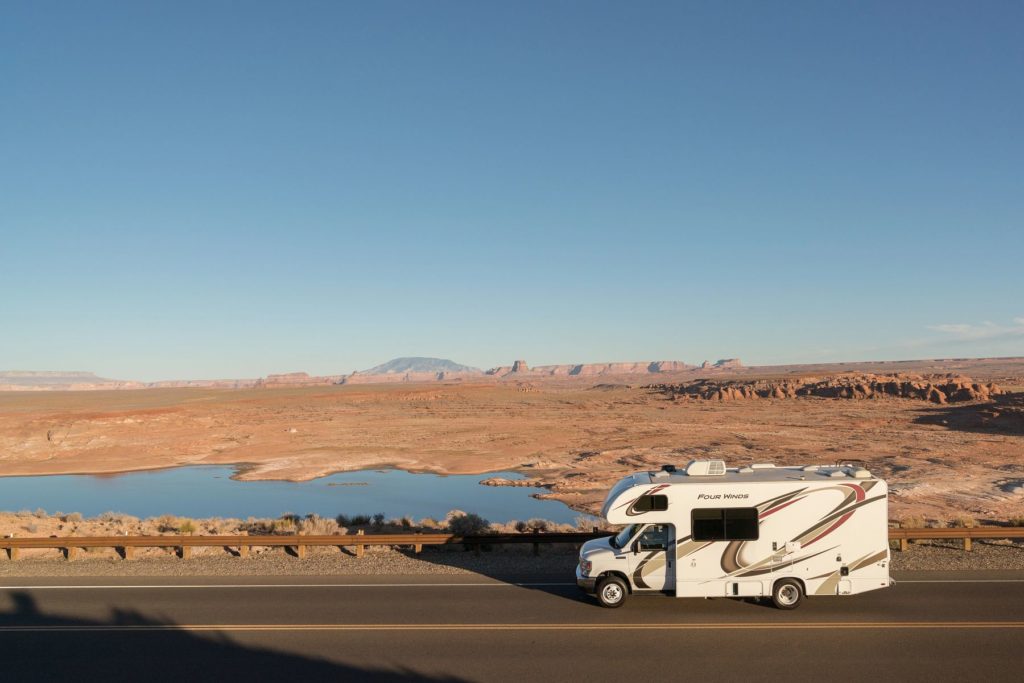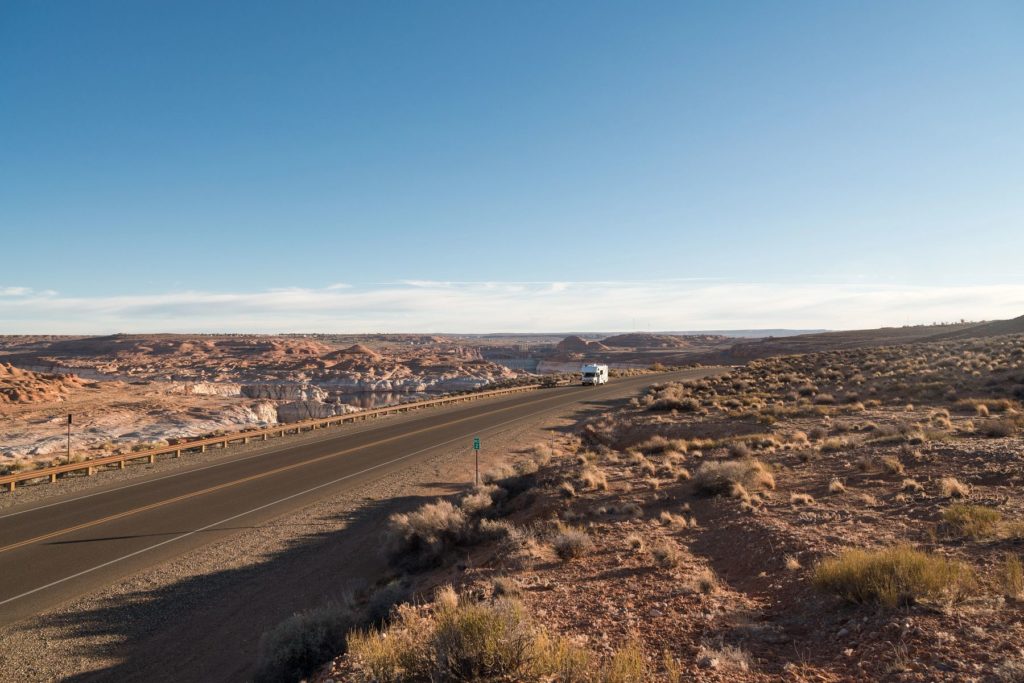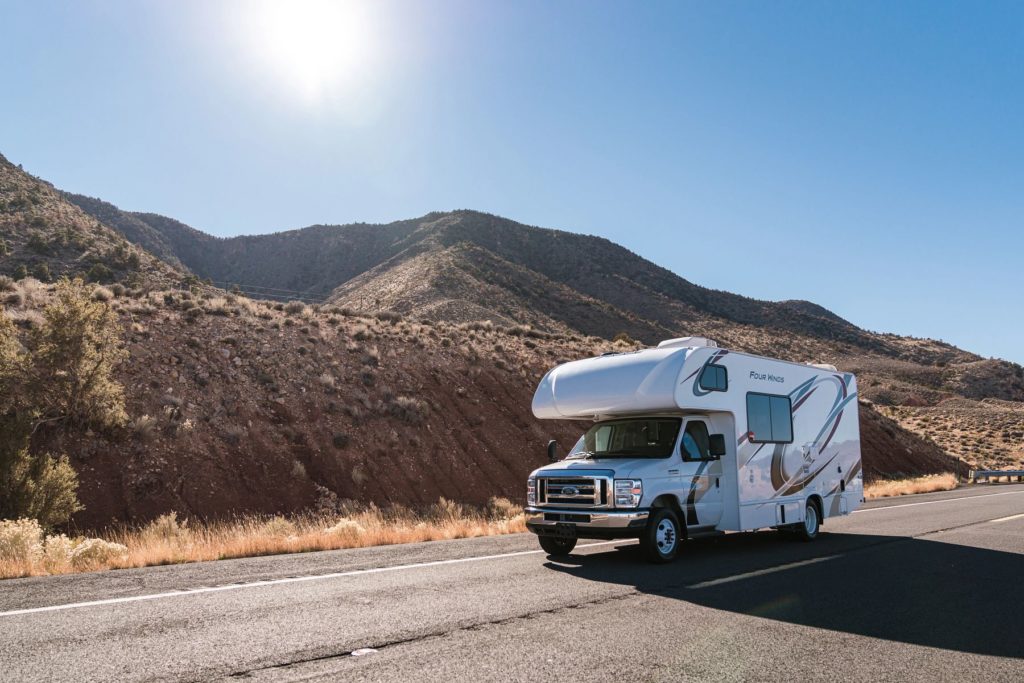The more we RV – and we’ve been doing this for ten years now – the more we dislike driving the Interstates and instead opt for backroads. Granted, there are times when you have to be somewhere fast and the Interstates are the only viable options. But fast is the problem. With speed limits of 70 miles per hour in most states (more in a handful of mostly western states), it’s very rare these days to find traffic moving at the speed limit. It is much closer to 80, we’ve found.
It is not unusual now to find people going 90, especially with traffic apps like Waze that use crowdsourcing to share real-time information on where the police are set up with radar. When you are in an RV – be it a towable or motorhome – speed is not your friend. The faster you go, the harder it is to stop and control.
Add to that the fact that the tires on most RVs are not engineered to be able to go as fast as the tires on your tow vehicle. Suddenly there’s a compelling case for traveling the backroads. But aside even from safety, backroads travel is just a lot more enjoyable.
Why Drive the RV on Backroads?

Image: Camping World
On backroads, top speeds are usually limited to either 55 or 65 miles per hour. We’ve found through experience– and top RV technicians have told us the same – that the sweet spot for safe speed and better gas mileage with an RV is around 60 miles per hour.
Lower speeds can also result in much-improved mileage compared to interstate driving. Budget stretching and safety are probably the two top reasons you should consider driving the backroads. But there are two more reasons:
- The backroads get you closer to the country and the people. Good scenery, Mom and Pop stores, and restaurants provide a real feel of the area you are traveling to.
- The backroads are calming. The stress of interstate driving takes a physical and emotional toll. The backroads make for better road trips that can give you a much better appreciation for the country.
10 Tips for Driving the Backroads in an RV

Image: Camping World
As a dedicated backroads traveler, let me offer up ten suggestions for driving the backroads in your RV:
Look for two-lane state routes
Like so-called Blue Highways, popularized in the best-selling 1982 book of the same name by William Least Heat-Moon. Here is where you will find small town America. Don’t be afraid to pull off the highway at a park, along a riverbank or lakefront, or with a great view of the mountains and just hang out for a while in a beautiful location. Maybe for an hour, maybe all day.
Beware of dirt or gravel roads
They can be tempting. But they have a way of going bad and becoming rutted and potholed. As a general rule, I avoid them. A Class B van or a small Class C motorhome will do better than a towable or a Class A. Dirt and gravel roads coat everything in the RV with dust in dry weather, mud in wet. And stones kicked up by your tires can chip your paint job. Learn What Makes an RV Built for Off-Road
Consider county routes with care
Some paved county roads peter out after a few miles to gravel. Others are quite narrow and offer few places for an RV to turn around.
Don’t rely entirely on GPS
The more remote the country, the less reliable GPS can be. State highway maps are a must if you plan to drive the backroads. If you can buy a collection of country maps for the state you are in (usually sold in local stores), you’ll have an invaluable and reliable reference to plan your trips.
Driving the backroads takes more planning
There are lots of RV trip planning apps available to help but you’ll want to consider places to refuel, buy groceries, find restaurants or picnic spots (county parks are often true gems), and RV parks, campgrounds, or places where you can boondock.

Image: Camping World
Ask for places to stay
In small towns, we’ve camped free in school parking lots, parks, churches, out back behind businesses, and even on the street. We have never done so without asking first. If you can’t find someone to give permission, stop by the sheriff’s office or police department. We’ve done this several times and have always been greeted warmly and told of places where we could overnight. Naturally, your RV needs to be self-controlled to do this.
Eat local
While it is economical and efficient to eat in the RV or at a picnic table, try to have a meal in a local “Mom and Pop” restaurant or market to experience local and regional foods that aren’t pre-packaged, frozen, or microwaved. Ask the staff or other diners what you should see in the area. You’ll always get some great suggestions.
Watch out for low bridges
Those RV trip planning apps will help here, as will RV-specific GPS modules. On the interstate, overpasses are usually 15 or 16 feet. Along some rural roads, 13-foot or lower bridges can pose a big problem to an RV.
There is no hurry
We’ve found the journey is as enjoyable as the destination. We’ve learned the best RV travel is flexible. To enjoy it the most, you need to be able to stop when you want, where you want. Setting an agenda, over-planning, and plotting out stop-by-stop overnights is way too organized for us and causes us to miss the things you can’t find in a book or through online research — the things that just happen, like taking a road far off the interstate just because it looks interesting.
Follow the 330 Rule
The 330 rule is you stop when you have driven 330 miles or it’s 3:30 in the afternoon. The idea is to get somewhere while it is still early enough to explore, chill, and enjoy the place when you’re not exhausted from driving mega miles. Is there anything worse than pulling into a campsite after dark? Less mileage and stopping early should be your travel style of choice.
There you go. Our 10 Tips for driving the backroads in an RV. Adventure awaits. Happy Trails!
Where are your favorite places to explore the backroads while traveling? Tell us in the comments below.
By: Mike Wendland
Title: The RVer’s Guide to Driving the Backroads
Sourced From: blog.campingworld.com/rv-basics/how-to/the-rvers-guide-to-driving-the-backroads/
Published Date: Thu, 12 May 2022 13:00:00 +0000
---------------------------------------------
Did you miss our previous article...
https://outdoorsnewswire.com/camping/rving-back-to-the-future-vintage-trailers-shine-in-pismo-beach-rally
 CampingSurvivalistHuntingFishingExploringHikingPrivacy PolicyTerms And Conditions
CampingSurvivalistHuntingFishingExploringHikingPrivacy PolicyTerms And Conditions
